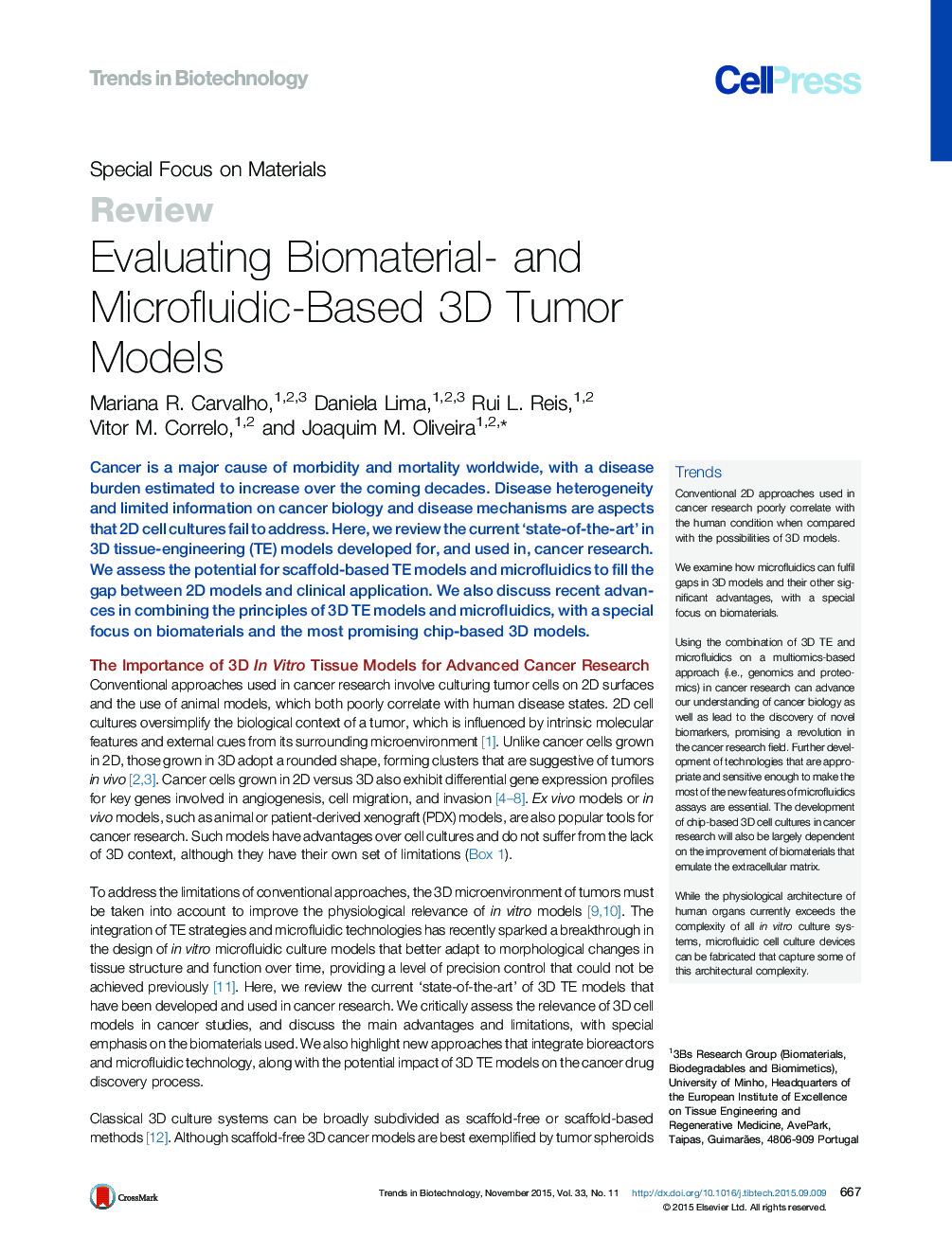| Article ID | Journal | Published Year | Pages | File Type |
|---|---|---|---|---|
| 36897 | Trends in Biotechnology | 2015 | 12 Pages |
Cancer is a major cause of morbidity and mortality worldwide, with a disease burden estimated to increase over the coming decades. Disease heterogeneity and limited information on cancer biology and disease mechanisms are aspects that 2D cell cultures fail to address. Here, we review the current ‘state-of-the-art’ in 3D tissue-engineering (TE) models developed for, and used in, cancer research. We assess the potential for scaffold-based TE models and microfluidics to fill the gap between 2D models and clinical application. We also discuss recent advances in combining the principles of 3D TE models and microfluidics, with a special focus on biomaterials and the most promising chip-based 3D models.
TrendsConventional 2D approaches used in cancer research poorly correlate with the human condition when compared with the possibilities of 3D models.We examine how microfluidics can fulfil gaps in 3D models and their other significant advantages, with a special focus on biomaterials.Using the combination of 3D TE and microfluidics on a multiomics-based approach (i.e., genomics and proteomics) in cancer research can advance our understanding of cancer biology as well as lead to the discovery of novel biomarkers, promising a revolution in the cancer research field. Further development of technologies that are appropriate and sensitive enough to make the most of the new features of microfluidics assays are essential. The development of chip-based 3D cell cultures in cancer research will also be largely dependent on the improvement of biomaterials that emulate the extracellular matrix.While the physiological architecture of human organs currently exceeds the complexity of all in vitro culture systems, microfluidic cell culture devices can be fabricated that capture some of this architectural complexity.
